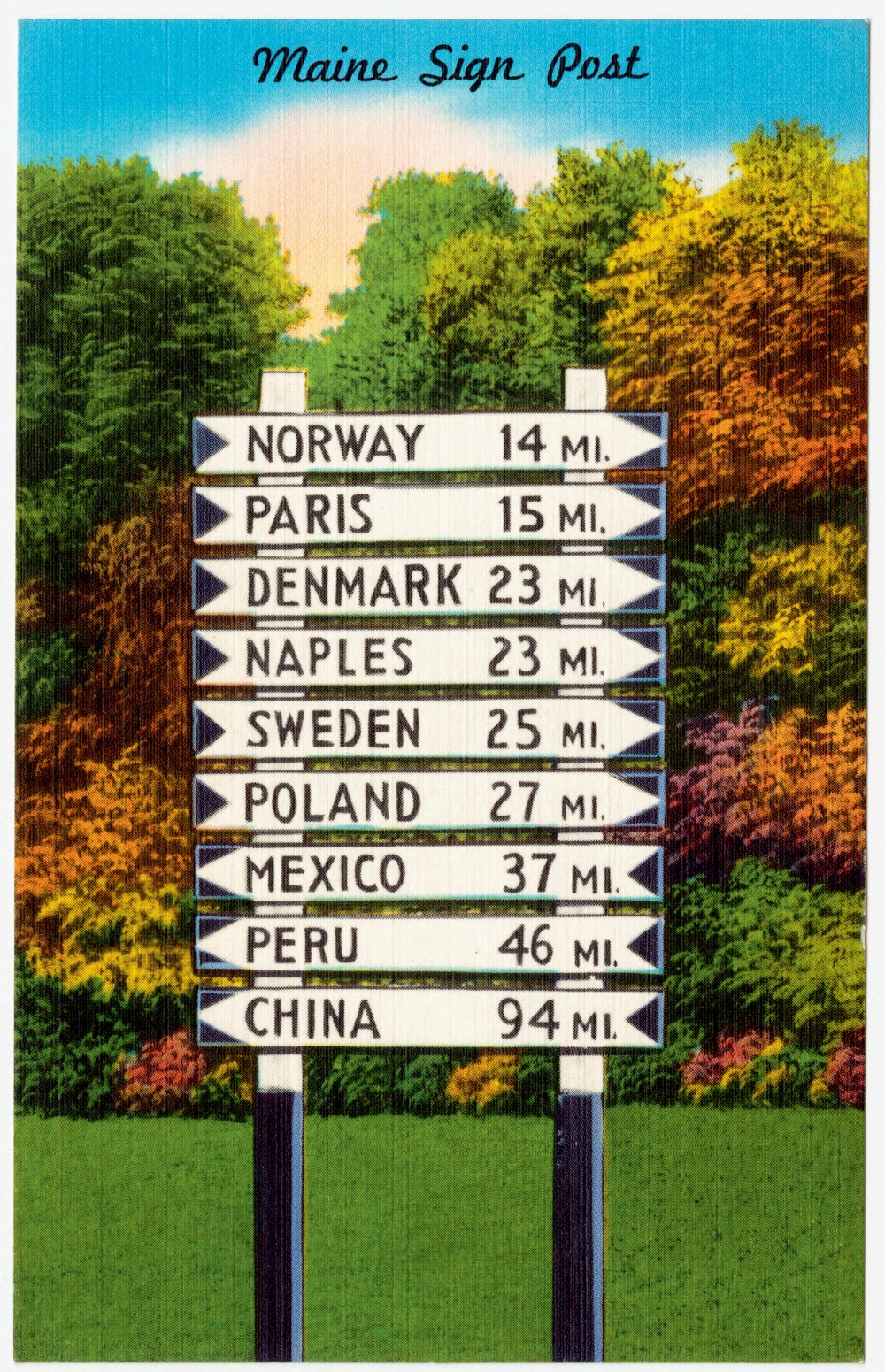Maine’s World Traveler Signpost | Up Close
Maine’s World Traveler Signpost in Lynchville has been a roadside attraction for nearly a century.

Maine Sign Post
Photo Credit : Boston Public Library, Tichnor Brothers Collection
Photo Credit : Boston Public Library, Tichnor Brothers Collection
Somehow it seems altogether fitting that Maine’s World Traveler Signpost is maintained by someone hailing from a foreign land. Specifically, an affable Englishwoman named Ann Madden, who lives with her three beloved bulldogs in a rambling log cabin at the corner of Routes 5 and 35 in Lynchville, where the famous roadside attraction has stood for nearly a century.
“When my late husband and I moved here,” Madden says, “we didn’t know the sign was on the property. My husband cleaned and washed it and put up a little fence and I planted flowers around it.”
Originally installed in the 1930s to promote tourism, the World Traveler Signpost notes the distance from Lynchville, which is part of Albany Township, to such places as Norway (14 mi.), Poland (27 mi.), Peru (46 mi.), and China (94 mi.). Of course, all of these, along with five other “foreign” places on the sign, are towns in Maine. (Madden’s own hometown, Oxford, England, is not represented, but it could be: There’s an Oxford just 20 miles down the road.)
After buying their Lynchville property in 2003, Madden’s husband, Mike, attached a small black mailbox to the base of the sign and placed a red notebook and ballpoint pen in it. The book now has a broken spine and pages puckered from years of handling and weather exposure, and it’s bursting with entries from visitors. One choice entry notes that the visitor came from “Krakow, Poland (The real Poland).”
Poland, Maine, as it happens, was not named for the European country. It took its name from a popular hymn by Connecticut hatmaker and composer Timothy Swan (1758–1842). China, Maine, was also named for a Swan hymn.
By contrast, Norway, Maine, seems to have been named by mistake. Residents had petitioned for the name Norage, likely derived from a Native American word for waterfalls. But when the incorporation became official in 1797, the name had somehow been changed to Norway. As for Peru, Maine, early settlers here often named their towns for places that had recently won their independence. And the country of Peru did so in 1821, the year after Maine became a state.
Tourists and travelers from all over the world seek out the signpost and stop to have their pictures taken with it. “It’s amazing,” says Madden. “We’ve had people from Cambodia, China, Japan. Truly they come from everywhere. It’s unbelievable.” —Edgar Allen Beem
Edgar Allen Beem
Take a look at art in New England with Edgar Allen Beem. He’s been art critic for the Portland Independent, art critic and feature writer for Maine Times, and now is a freelance writer for Yankee, Down East, Boston Globe Magazine, The Forecaster, and Photo District News. He’s the author of Maine Art Now (1990) and Maine: The Spirit of America (2000).
More by Edgar Allen Beem

